Collages by Requiem For A Screen
There’s no shortage of talk about a deck’s notorious resistance to inflation. But what about shoes? While something like a Lebron in 2019 is substantially more expensive than a Jordan in 1999, skate shoes have hovered around the same average $70-80 price tag for the better part of two decades, even as skateboarding itself has grown and adapted to new trends, technologies, and customers. Meanwhile, every fashion house in Europe has been raking in the money these past few years, pushing puffy sneakers reminiscent of old skate shoes.
We tracked down the principal figures behind the first three-figure skate shoe, released in 1997, and got their story on what was as much of an anomaly as it was a watershed moment for skateboarding as a cultural phenomenon, and style of footwear design. (Keep in mind that, adjusted for inflation, $100 in 1997 is the equivalent of $156 in 2019.)
What was the skate shoe landscape like at the start of the nineties?
Don Brown, Chief Brand Strategist at Sole Tech: Airwalk, Vans and Simple were the only other shoe brands. They had become so mainstream and rigid — and there was a dip in the economy, so they scrambled to get sales wherever they could. Pierre [Andre Senizegues, founder of Sole Technology] was doing the distribution for Etnies at the time, bringing it over from France. When skateboarding crashed, vert and freestyle were pretty much eliminated. There was a whole generation of upstarts, like Rocco and them, and everyone in skateboarding rode for Etnies at some point.
Chad Muska: There were a hundred riders on Etnies, or something crazy like that. Even that High Five video had so many people in it. The shoe industry then was like, “Oh, this company is going to give you free shoes. Maybe there’s a chance you get paid.” It was so secondary to boards. There were early pro shoes, like the Half Cab, the Natas, and the SLB, but I think the real start of the skateboard shoe industry being serious was when they began making videos.
How did éS launch?
Don: There was a point in doing Etnies when we saw shoes get more athletic. We would pay attention to what the riders were wearing when they weren’t skateboarding, and they were wearing Jordans when they came to the office. We wanted to make skateable versions of what they wore when they weren’t skating, and that’s where the idea of éS came from in 1995.
Muska: I remember them saying, “We want you and Tom [Penny] more involved.” We’d go to the offices and see shoes being developed, and get a crazy spark: “Oh, what if you changed this to that?” We were paying attention to things in Nikes and other more advanced shoe companies, and were like, “Let’s make this for skateboarding.”
Don: Since so many people rode for Etnies, we got to pick the cream of the crop for the team — Koston, Penny, Muska, Creager.
Muska: They wanted to do something more tight-knit than Etnies, like a group of five or six pros that’s an elite skate shoe brand. At first we thought éS meant “Etnies Shoes.” We thought it was a little subdivision, and that there’d be a chance to make our own signature footwear.
When did the idea of the Muska pro model come about?
Don: We carried the Sal 23 over from Etnies, Koston got the first pro model, and Muska got the second. We got a new designer from France, Franck Boistel, and he ended up doing Muska’s shoe.
Franck Boistel, Senior Shoe Designer For Sole Tech at the time: That was not only the first shoe I designed for Sole Tech, but the first shoe I ever designed in my life. Muska’s was the first skate shoe on steroids. We’d be doing work at the office, and he’d be there looking over my shoulder, drawing stuff.
“I wanted to make it the Gucci of skateboarding or something.”
Don: It was really bulky, but it fit Chad’s style. It made sense for it to be big and in your face.
Muska: You know the graffiti character that’s like the animated kid with fat laces, giant pants, and everything exaggerated? That’s what I was trying to do with the shoe. I told them I wanted to make a skateboarding [Adidas] shell toe — then from there, I remember drawing the little éS logo, the little ollie pad. Being novices in footwear, we made up shit as we went along and that’s what created this new look. We were like, “Oh, well, our feet get hit a lot…so let’s make these things real puffy.”
Franck: Before that, skate shoes were just cupsoles. That was the first one with three layers of extra cushioning and a polyurethane midsole. Also, there was a big trend with rubber lace loops. Chad wanted to have an all rubber toe, but that was too much. We kept the stitching on the toe though, kind of as a homage to the shell toe.
Don: We threw the stash pocket in the tongue because Chad was a heavy weed smoker at the time. It was a gimmick, but different than any other shoe.
When did you realize it was going to be a hundred bucks?
Don: We designed the shoe without a price point in mind. The price came back and it was…high. We had discussions internally, like “Oh shit, we can’t wholesale something to shops for $54.99.” That would go into retail at $105-110. Retail bit the bullet on the margins on their end, and sold it at $99 or $100.
Muska: I remember thinking, “That sounds amazing.” I was into fashion and stuff, so for me, something more expensive means it’s better. Like, I’m coming from nothing, and we were able to make something that was the best shoe out there.
Joe Bragan, Sole Tech Sales Rep 1995-2014: Back then, shops would sell shoes at a 40% margin. The Koston was like, $50 wholesale, so shops would sell them for $90. Some shops didn’t buy them because of the price. I remember my phone ringing off the hook the day they came out, with shops trying to get them after they passed — and of course, we didn’t have any left. That primed us for the Muska a bit, because it was like, “Well, they can do $90…”
Franck: The product has to be worth the price. There were a ton of features, and those shoes were hard to make.
“Police were pulling over skateboarders and looking in their shoes because they thought all skaters had stash pockets in their shoes for hiding weed.”
Joe: You’re also buying it to tear it up. If you ever skated the Koston, you know know that it lasted a week-and-a-half. And that was $90. The Muska was pretty bulletproof. Sure, the teamrider thing is paramount, but a lot of kids would check out the shoe, see the ollie pad, the rubber, the padding, and know: “Oh, this is a more substantial shoe.” It was something you could see. A lot of people felt like they were getting their money’s worth.
Do you remember the response to the shoe and the price?
Don: We were scared, but sure enough, it hit the shops and sold out. The stash pocket created a lot of talk — it was even in the newspapers that police were pulling over skateboarders and looking in their shoes because they thought all skaters had stash pockets in their shoes for hiding weed. I think the combination of the press, it being a really good-looking shoe, éS being the premier brand in 1997, and Chad’s personality created a halo effect around it. Even before Muska was a big pro, I’d be walking around with him and people who knew nothing about skateboarding would stop thinking he was a rockstar or something. It was a Christian Hosoi level where he’d walk into a room, and people would know there’s something else about this guy. Franck is a really good shoe designer, and he captured the personality of the rider with the shoe.
Franck: The market was good for us. Skateboarding was booming, the economy was good, and people were willing to spend the money.
Joe: There was a bit of pushback from shops, like “I could sell it for $89…maybe.” I think for the most part, they were intruiged by the newness of it. Maybe they would only get six pairs instead of 24 or 36. But when the shoe came out and started selling, they all realized they didn’t buy nearly enough.
“It ended up costing me like $150 to have the Muskas for the first day of school.”
Muska: Maybe Airwalk and Vans had crossover, but the only customer for éS was skateboarders. After it became more popular, I definitely felt a bit of a backlash from my fans, where kids were like, “I always wanted your shoes, but I can’t afford them.” That was never our goal. I thought a pro shoe was a once in a lifetime opportunity, and I wanted it to have every bell and whistle possible. I wanted to make it the Gucci of skateboarding or something.
Tyler Tufty, shop worker/lurker @ Wavedancer Board Shop in Springfield Mall, Virginia: It was the day before I started senior year of high school in August 1997, and the black on black Muska shoe had just come out. The shop closed at nine, and I remember it being 8:30, and me speeding, trying to get there before it closed. I got pulled over going like 50 in a 35 or something. I worked at the shop, so with my 30% employee discount, the shoes came out to seventy something, plus the ticket, and it ended up costing me like $150 to have the Muskas for the first day of school.
James Rewolinski, shop worker/lurker, Phase II Skate Shop in Milwaukee, Wisconsin: Some parents were definitely up in arms about it. But there were fewer places to get skate shoes at that time, let alone éS. The pricetag made it seem rare and special. When kids want something, they want something. There was no Zumiez or Pac-Sun for people to go to, so all the business got funneled into the skate shops. Even if there were a couple people who were like, “Screw that, I’m not paying a hundred,” you had enough people that were big enough Muska fans to where it sold well, even in such a working class part of the country.
Why do you think the pricetag of a skate shoe peaks at, let’s say, the $70-80 mark, even twenty years after you guys put out a shoe for $100 that sold well?
Don: If people feel it has the value of $100, then they’ll still pay the price. We dropped a shoe recently called the Accel Plus Everstitch and that was $99. We sold out of it on our website, and I didn’t see one comment anywhere about the price. The challenge with shoes is when money gets tight — people would rather spend money on cell phones and survival. Every kid I talk to buys Nikes at the outlet store instead of the skate shop, to where the average price of a shoe to them is $50 or $60. But when we did the Muska, even Vans didn’t exist in the same way and a lot of those were still $80. When ours dropped for a hundred, a lot of people were like, “that’s what it is.”
2008 fucked it up because price points became a bottomless pit. Nobody wants to push technology when there’s no money going around, and everyone ended up skating cheap vulcanized shoes from 2008 until maybe 2012. That technology has existed since the 1920s.
James: Unless you can see the shoe is going to be way better, the hundred dollar shoe isn’t neccesarily going to last much longer. I do think there’s going to be a small contingent of people that are fine paying more than a hundred for a premium thing, like the Nike Koston 3. But there’s a mental block to where there’s no reason for someone to spend a certain amount of money on something they’re going to rip up, even if they might be ok spending over a hundred on something they’re not going to skate.
Why do you think this style of puffy shoe design has become such an inspiration for luxury brands? What goes through your mind when you see a high fashion shoe selling for hundreds of dollars, and it is clearly inspired by a skate shoe from the nineties?
Don: If you make footwear or apparel, you’re in the fashion industry, and skateboarding pulls fashion from everywhere. The Yeezy 6 was the first shoe that came out that really brought a lot of reactions our way, with people saying it looked like the éS Scheme. From what I heard, one of Kanye’s creative guys used to skate and got inspiration from that design — and it makes sense, why would they want to make another slip-on or Jordan? Everyone looks to the past for inspiration on how to do things different.
The nineties puffy skate shoe thing is really unique, in that there was no other category within footwear that has such a defined “skate” look — the look was almost as defined as the “goofy boy” look from the early nineties. At Journeys in Europe, they will still bring that style of shoe in because that’s still people’s first reaction when they see it: “skate shoe.”
Muska: A lot of young skaters are gravitating towards these high-end products, buying them, supporting them and pushing them through their social media. I think that’s great and all, but at some point, those companies have to support skateboarding back. If they’re gonna take from the industry, then they should help the industry or help the kids that are supporting them, in some way, too.
Let’s say a kid gets hooked up with Diamond or Altamont. It’s like, “Oh, that’s cool,” but it feels so within our industry. But then, all of a sudden, if they got Virgil going, “Aw, here’s some Off-White stuff,” they’re like, “Oh, shit!” They’re getting something that’s unattainable from within our industry, and I was that kid growing up. I didn’t really give a shit about skate clothing when I was coming up, but if I could get some high-end stuff, like some Prada swooshy pants, or some Polo Sport gear, I was like, “Damn, I’m flossing, now.” I felt special. We’re going through this whole gravitation away from skaters buying products that are from skateboarding, and that could be very dangerous to our industry if we don’t support what skaters do, and continue to make things that we feel are equally as cool on our own.
“It’s important for us to maintain some level of independence within our culture.”
Don: I went by Balenciaga to see the Triple-S out of curiosity and they were completely sold out. It’s so crazy that the whole skate industry is barely getting by, but these fashion brands can sell out of a $900 shoe in one day. It’s almost like the more wild something is, the better chance you have of succeeding.
Muska: I think it’s important for us to maintain some level of independence within our culture and that means that we’re making the products, designing them, supporting them and having our own thing that’s not what everybody else is doing. Skateboarding is as big as it’s ever been, but somehow, all these companies are like, “We have no money, the budgets are all cut.” Everybody seems to be struggling. When I was growing up, we were creating our own brands, designs and genre of clothing because it was rebelling against these organizations and mainstream culture. I don’t wanna see that lost.
Special thanks to Don for sharing your stories and the original Muska pro model sketches from the Sole Tech archive. Thanks to Chad, Franck, Tyler, Joe, and James for your remarkable memories. Thanks to Requiem For A Screen on the graphics.






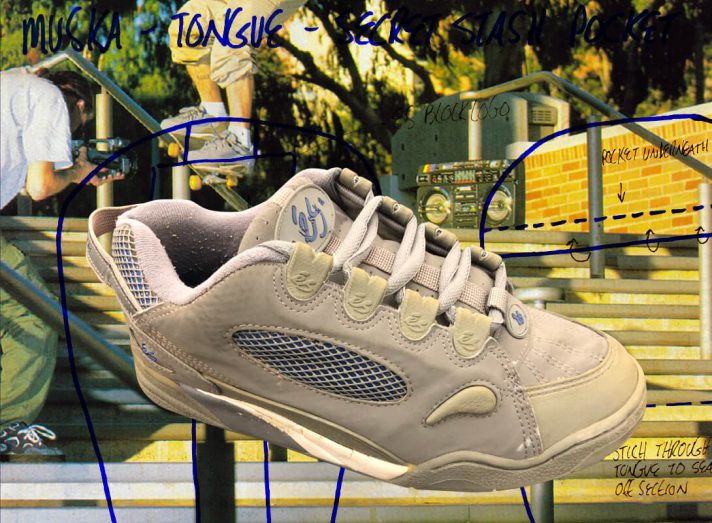
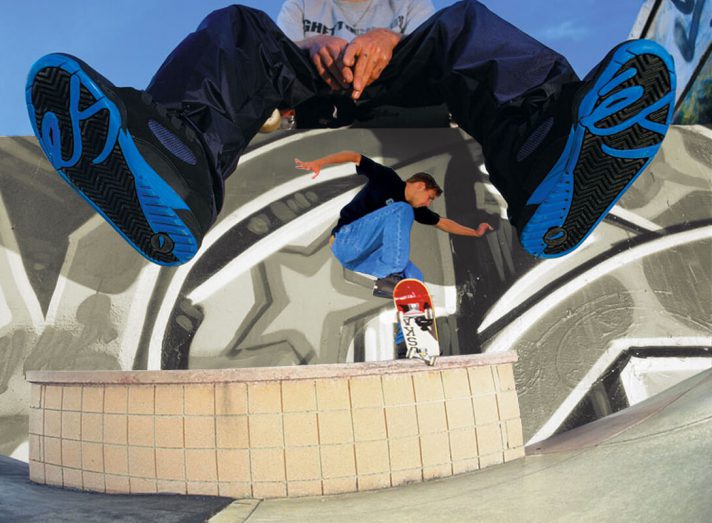
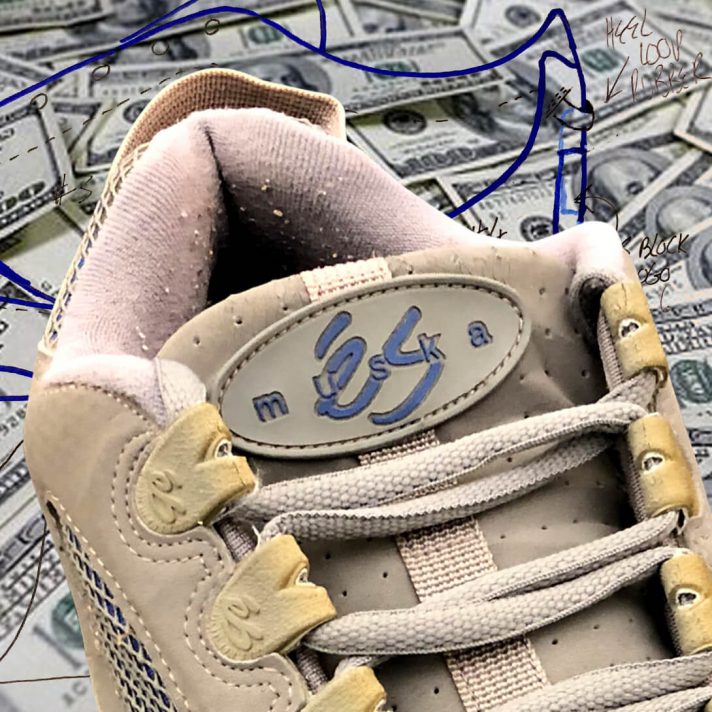
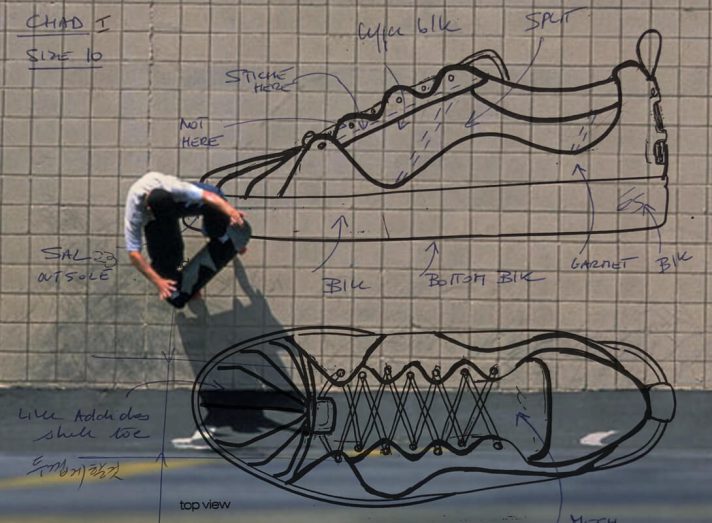
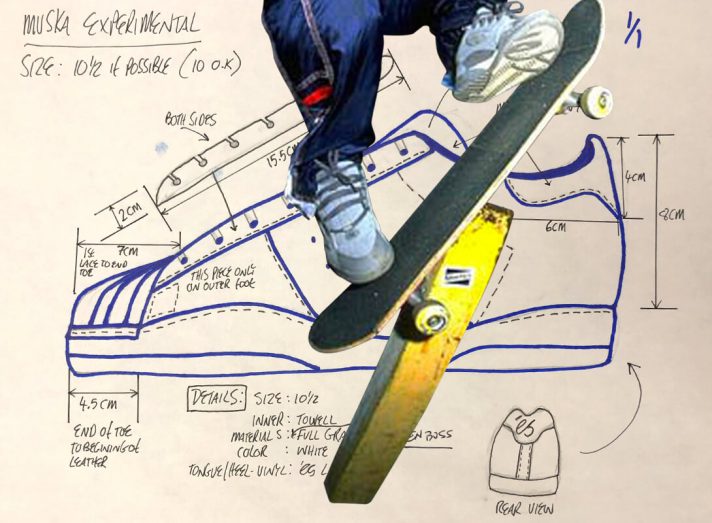
What the hell is a Yeezy 6?
an easy google search?
Added a link for you, Mr. 6 ;)
When ours dropped for a hundred, a lot of people were like, “that’s what it is.”
^^^
this is the part that got me. maybe not for shoes, since sports companies run the show now, but for hard goods. skate shops are hostage to skateboarders crying broke and not the other way around. what if all decks went up to $75 tomorrow? every company agreed to raise the price at once, not just one. trucks went up $10. wheels went up $8.
what would happen? would everyone quit skating because they can’t afford it anymore? hell no.
i’ll tell you what would happen. stabler shops which means stabler scenes. stabler companies which means riders not missing checks.
skateboarders are so stuck in their ways that they’re overdue for a bit of a shock to the system. the inflation screenshot had me bugging out crazy. i cant imagine what that is for boards.
such a sick one :-)
They were hella bullet proof – I had a pair (blue & white natch – always thought the white detail on the side of the sole looked super dope) that probably lasted a year: and this was at the point I was learning kickflips, so daily destruction of the toe (but also the era of prolific Shoe Goo TM use for UK skaters – you could at least double a shoe’s lifespan, and get vaguely high in the process – although your feet looked like HR Giger concept art by the end). The pricepoint was proper Christmas AND birthday combined level/hassle your skint folks for months… Only shop-sponsored skaters or kids with posh parents wore Koston 1s in Nottingham in the late 90s.
Can anyone beat the price tag of 1645USD for a 90s skate inspired shoe? I present to you the Maison Margiela White Fusion Low:
https://www.ssense.com/en-us/men/product/maison-margiela/white-fusion-low-sneakers/3049238?gclid=Cj0KCQiAvqDiBRDAARIsADWh5TcTlvDGCmyO-tulhu8i98OIrns2ATQfc7DNDi_Hl1O2tBz8r9M8lAoaApNmEALw_wcB
Yeah, a $50 board in 1998 should be $77 in 2019 ;)
https://quartersnacks.com/wp-content/uploads/2019/01/screen.png
And no, I don’t think anyone would quit skating. Gonna duck behind this wall now…
As somebody who has been skateboarding their entire like, and as somebody with kids, I can attest to the fact that skateboarding is INFINITELY cheaper than putting your kid in a little league or something of that nature. Infinitely cheaper than any other ‘action’ sport too.
why is there no puffy shoe/puffy shirt seinfeld meme
could not have been stated better, however skateboarding could possibly never gravitate away from companies biting off of the industry, which i guess is just how the path has formed
really well composed article, i think skate companies should be more creative with their apparel design, and stop making the same coach jackets and sweatshirts year in year out.
The rest of the world pays a helluva a lot more money for all skate gear (hard and soft goods) than Americans do.
@guy yelling at a cloud
that’s price fixing, we don’t want Jamie Thomas going to jail, do we?
Do we?
The thing is…I was there, and they actually weren’t $100, anywhere. When the first three colors hit, I remember that the black/grey ones were like $5 more than the white and navy (iirc because they were mostly full grain leather as opposed to nubuck on the other two?), but I believe they were $90. Not a big deal, but when you’re basing the article on cracking the triple digit barrier ––
Skateboarding takes from fashion, fashion takes from skateboarding. Those Krew jeans that ripped the pattern from Helmut Lang..
As a skater really loved to know about the first skate shoe. I love to know the history. But was not it very expensive? Nowadays we can have skate shoes at $25, and that is also very good. Well, it is an interesting information shared about skate shoes. Enjoyed it.
“I went by Balenciaga to see the Triple-S out of curiosity and they were completely sold out. It’s so crazy that the whole skate industry is barely getting by, but these fashion brands can sell out of a $900 shoe in one day”
Every people who know the muska would pay anything for a re-edit. Same goes for any other models that got realeased during that time (koston’s 1 or 2 !!!)